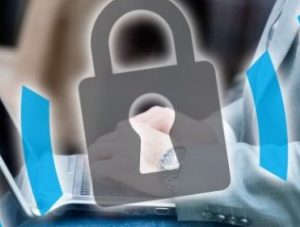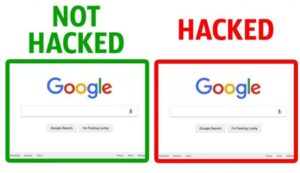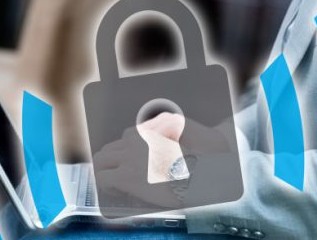
No doubt free Wi-Fi is great. But there are public networks that conceal many risks, including even the loss of all funds in your bank account. The bright side today is here is the tips you should remember when you connect to the free Wi-Fi network so that you don’t become a cyber-fraud victim when using the public Wi-Fi (wikipedia) service. Free Wi-Fi is an unexpected service, especially if you are working from the library or airport or if you only want to save data on your phone or laptop. However, you have to take care of security precautions when you are out of the house and here are tips on how to surf safely on any device.

When the bank you’re dealing with is inviting you to check your bill for $750, the circumstances may prompt you to choose to access free Wi-Fi and not wait to access the home network. mobile device, tablet or smart phone settings may not be enough to keep you safe from prying eyes during intrusion. . If you want to keep your information and files safe and read these basic tips to protect yourself when you are away at home.
Tips to remember when connecting to free Wi-Fi
1. Do not attempt to enter bank card information:
The only guaranteed way to protect yourself from data theft is not to use the Internet frequently in online purchases or online banking services. There are a few MB of paid bytes that become affordable for the safety of your account.
2. Close Wi-Fi if you do not use the Internet:
When you close the Wi-Fi network, you can solve three simultaneous issues: fast battery dump, automatic connection to a fraudulent network, spam e-mail messages. For additional protection is not to connect to the Internet and add a Doneraccumulate property to your browser, it will not allow the device to track your movements.
3. Connect to the default network:
Scans your virtual network connection status by staying anonymous while surfing the Internet. When you enter different sites you enter you will see virtual IP network and not you. These networks often slow down your Internet connection However, the price is usually not high and most virtual network providers still have free services as well.
Related Posts
4. Do not allow your computer to save the Internet:
Most devices provide you with automatic reminders and connect to a hot spot they use once. But the Makhadin and swindlers can create their own access point with the same name and thus access your profile data or even some information about your financial accounts.
5. Attention to the network name:
Network hackers are often used with names similar to those already in the vicinity. The only difference is that there is a hotspot that is connected to a password, while the fake one is free to use. Therefore, before you connect to a free network, ask its owner first.
6. Download a good anti-virus program:
Always try the latest antivirus versions. There are new ways for hackers to show up almost every day, and your antivirus program must keep talking constantly. On the other hand, an anti-virus program should warn you that you can connect to imaginary networks.
7. Select networks that use validation in two stages:
A network that does not require any additional communication procedures may be fraudulent. To stay safe, try choosing a network that requires you to enter the icons and send them as a text message to your phone. This will protect you from your precautions.
8. Keep Encrypted password:
Although it seems clear that your passwords are not written in different devices without hatching because they make you more susceptible to being circumcised I condemn the acquisition on the Internet because this neglect makes it much easier for criminals to access your data.
9. Check URL:
Phantom networks you can work to redirect you to unknown site networks, except those networks that collect only your personal data. If you see any strange characters in the URL of a familiar web site, it probably means that this site is not genuine. Be sure to use a trusted and secure browser because a good browser will enable you to discover these differences and warn you.
10. Use Secure connection:
One of the simplest ways to protect you is safe communication. Starts through the https://address instead of http://. that some sites use. Some sites like Google use secure communication to transfer contact data. If you want all the Web sites to be safe think of HTTPS, which corresponds to all popular browsers.
11. Stop sharing:
You can share music, pictures, or other files or even allow remote logon from other computers on your Wi-Fi network at home because they are private. These settings must be disabled before you connect to the free and public Wi-Fi network because they may enable anyone else in the vicinity to hack into your computer.
If you are using a Windows-based computer, you will need to start by opening the advanced sharing settings for the main group section of the Network and Internet settings in Control Panel. From here, you will be able to switch file and image sharing in addition to network discovery, which will make your computer visible to anyone connected to the network itself. For Mac OS go to System Preferences then share and make sure no other option is selected.
12. Protect your password:
The use of powerful and unique passwords for different accounts can help you if one of your calculations is compromised. Multiple secure password tracking can be a difficult process. By using passwords, you can stay safe and secure.
But do not try to store your information in multiple ways. Use Kybas, which maintains an encrypted database file on your computer. While fast-bass stores your credentials. Of course there are pros and cons for each approach but all of the chambermaid is perfectly safe.
13. Check your applications:
It’s time now to keep your browser and internet-connected devices updated with the latest versions, but make sure you do this through your own home network or a trusted network, not the open Wi-Fi networks. Open networks during application updates can allow hackers to install malicious software on devices.
14. Using Additional Secure tools:
There is a greater focus on internet privacy than ever before. Tor and virtual networks and Dontrac have become increasingly popular. With regard to the open Wi-Fi network, you may find useful accessories in enforcing encryption on websites that are not encrypted by default that doesn’t protect you from all sites, but it will help you for most sites.
15. Logoff when finished:
You do not keep your login permanently to your personal accounts when you reach the Wi-Fi network as if you leave yourself exposed. For more security, log on from each Web site after each session.
16. Patch Before you go:
After software is updated and updated regularly for basic safe practice, especially when it comes to Wi-Fi internet. You should keep your web browser, software and antivirus solutions to fix bugs. While the virus engine will help you scan and detect recent removal of threats and attackers and take advantage of getting away from fooling unsuspecting users to download something they think is updating the software. However, you will quickly realize that the device has been damaged.
17. Avoid access to sensitive information:
Generally, Wi-Fi networks should not be used to access e-mail, online banking, security card accounts, or any other sensitive data. The best bet is to do this from home where we hope it is your ISP and protect your information.
18. Download the Hot spot with you:
Access to WiFi hotspot is great and you can afford hot spots with you. Hot spots have their own battery and use the cellular connection to connect to the Internet, and provide many people with Wi-Fi service. Surely the subject will cost you a lot but it may be useful if you get the hot spot with you.

